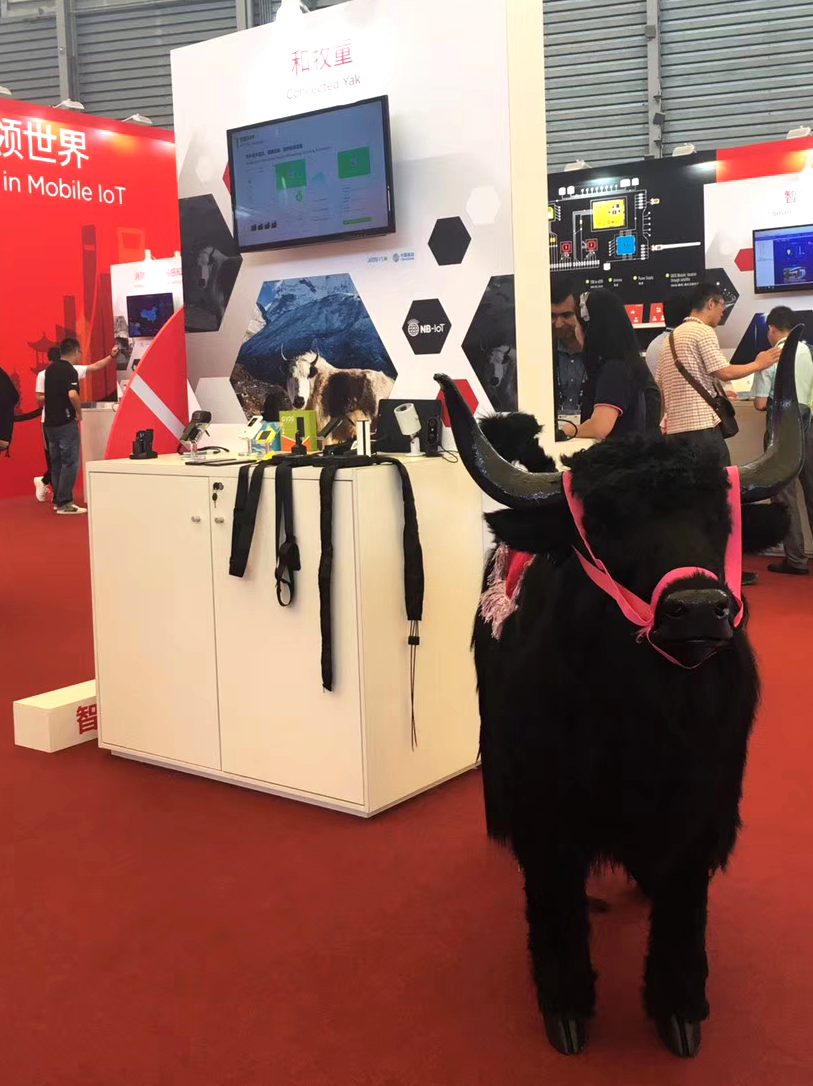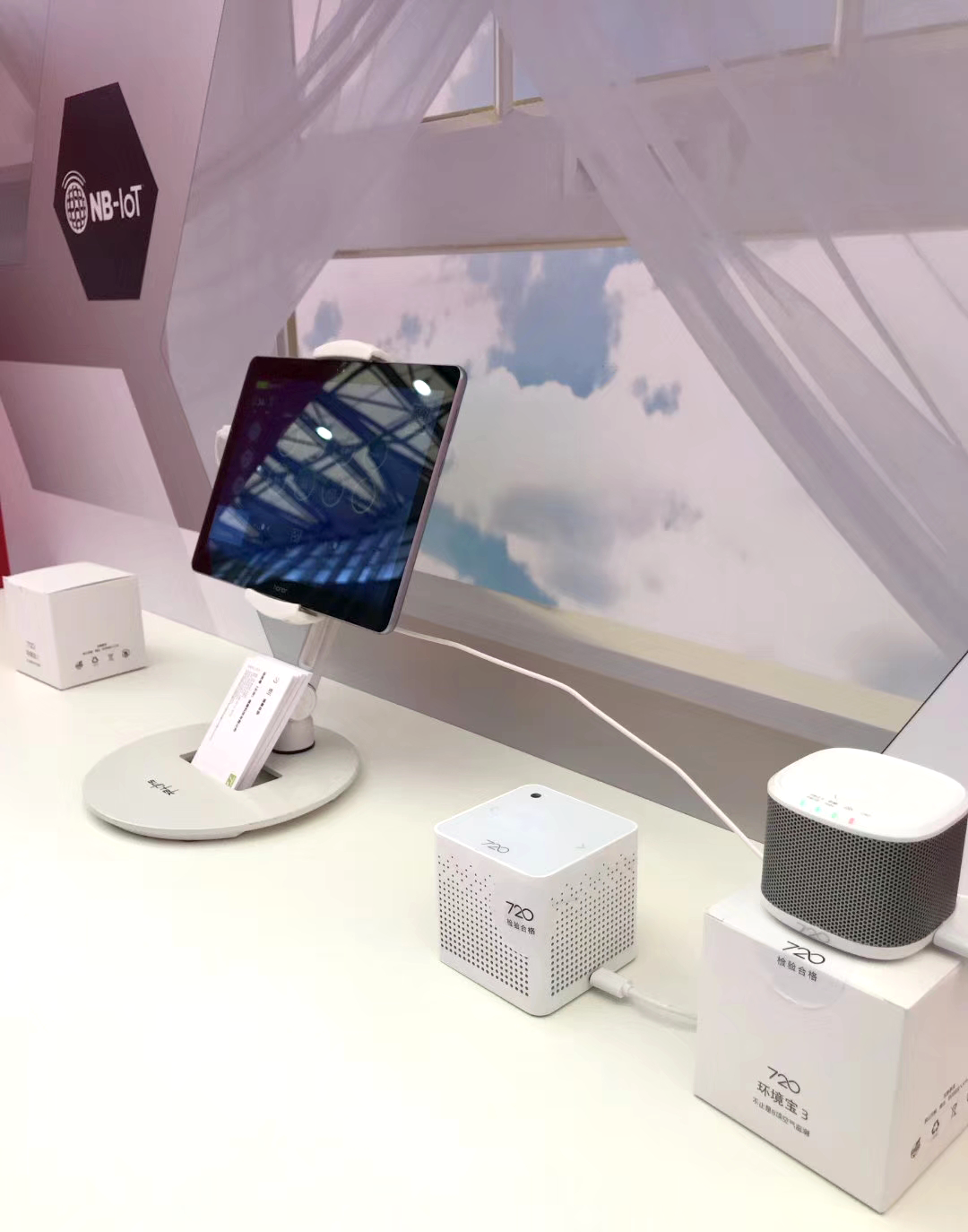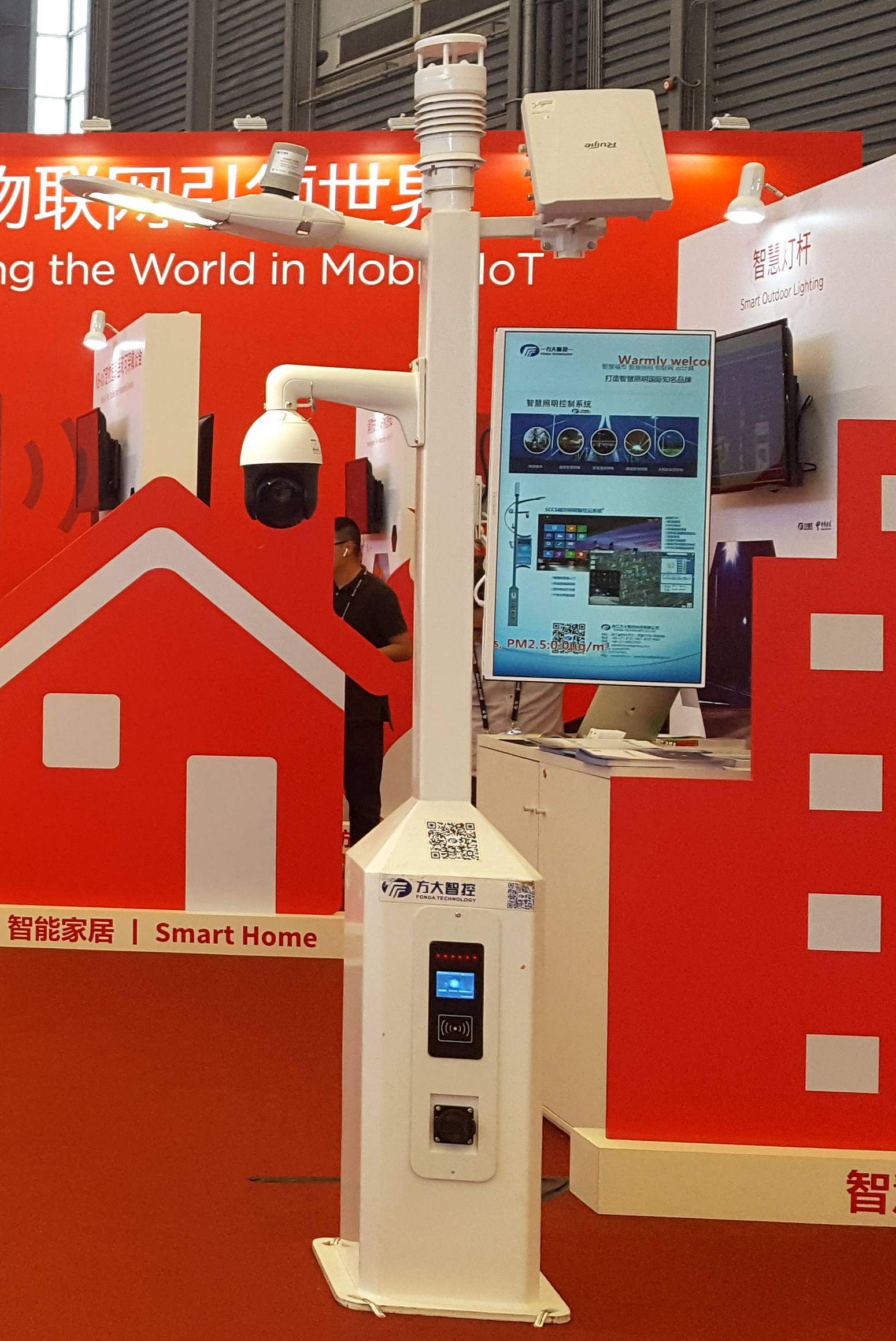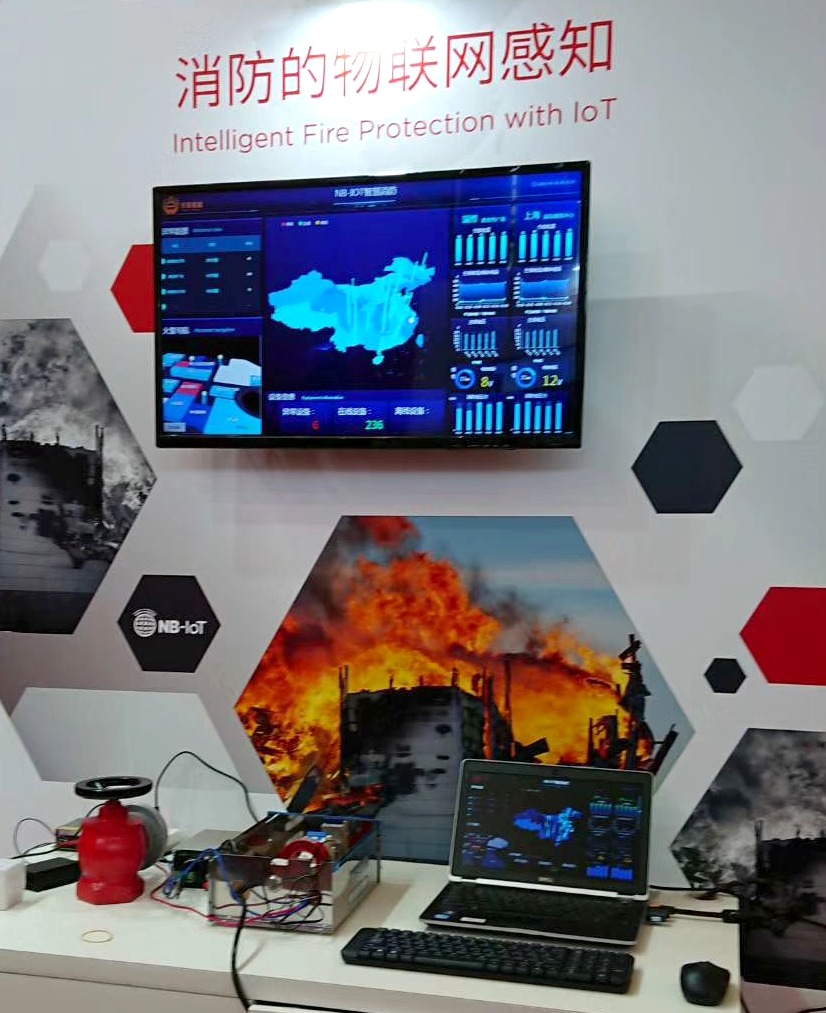Showcase at MWC Shanghai highlights breadth of Mobile IoT deployments in China
China is a global leader in harnessing the low power wide area connectivity delivered by Mobile IoT technologies. At Mobile World Congress Shanghai, the GSMA partnered with China’s leading mobile operators and innovators for Connected China, which showcased the wide variety of real world applications for LTE-M (Long Term Evolution for Machines) and NB-IoT (Narrowband-IoT) – two key Mobile IoT technologies.
In the exhibition, 12 innovative developers, start-ups and companies demonstrated applications across industrial IoT, logistics, smart agriculture, fire safety, smart city and smart home.
 Among the eye catching and thought provoking solutions on display, was the Connected Yak demo presented by Shenzhen JIMI IoT, which harnesses the wide area coverage of NB-IoT to help manage grasslands and improve the health of yaks in rural China. A smart collar, equipped with a GPS tracker, collects data on body temperature and movement throughout the lifecycle of the yak, transmitting that data back to management software via NB-IoT. The data can then be analysed to predict whether the animals are healthy, prevent inbreeding, and research which factors may have an impact on the growth speed of yaks. The data is also used to understand grazing behaviour to help solve the problem of overgrazing and controlling desertification of grasslands.
Among the eye catching and thought provoking solutions on display, was the Connected Yak demo presented by Shenzhen JIMI IoT, which harnesses the wide area coverage of NB-IoT to help manage grasslands and improve the health of yaks in rural China. A smart collar, equipped with a GPS tracker, collects data on body temperature and movement throughout the lifecycle of the yak, transmitting that data back to management software via NB-IoT. The data can then be analysed to predict whether the animals are healthy, prevent inbreeding, and research which factors may have an impact on the growth speed of yaks. The data is also used to understand grazing behaviour to help solve the problem of overgrazing and controlling desertification of grasslands.
“It is hard or not realistic to recharge the animals’ GPS tracking device periodically, especially for free-range animals,” says Lu Guojun, Product Manager at Shenzhen JIMI IoT. “With NB-IoT, a GPS tracker without extra power recharge, could last for more than three years tracking three positions per day, removing a lot of worry and work from herdsmen.”
The company, which is working with China Mobile, says the target market for the solution is primarily livestock farmers, including those with cattle and sheep, as well as free-range animals, such as the yak. “We are targeting to have it commercialized, offering a total solution to some husbandry parties, with NB-IoT GPS tracker hardware, SIM card service, software for management and apps for easy access,” says Lu Guojun. “All these products and services could generate revenues for JIMI IoT.”
Mobile IoT technologies can also be used to track pets, as demonstrated by Oviphone Technology, which has developed an NB-IoT tracker that can show owners the location of their pet and send an alert if the animal leaves a defined geographic area.
Low cost environmental monitoring
The GSMA’s Connected China showcase also featured Guangzhou Hive Information Technology, which demonstrated how NB-IoT-connected sensors can be used to monitor and manage the logistics lifecycle. Designed for use with commercial freezers, cold chain logistics, medical freezers, and frozen warehouses, the Hive solution aims to help enterprises predict and control risks, increase cargo safety and quality, optimise operational processes, reduce costs, and improve customer satisfaction.
![]() The low power, low cost NB-IoT-connected sensors can record a logistics vehicle’s route in real-time, and monitor both temperature and humidity in warehouses and during transport. Temperature and humidity monitoring can help safeguard sensitive commodities, such as cold goods, medicines, or hazardous chemicals: an alert is triggered if temperature or humidity thresholds are exceeded.
The low power, low cost NB-IoT-connected sensors can record a logistics vehicle’s route in real-time, and monitor both temperature and humidity in warehouses and during transport. Temperature and humidity monitoring can help safeguard sensitive commodities, such as cold goods, medicines, or hazardous chemicals: an alert is triggered if temperature or humidity thresholds are exceeded.
By using NB-IoT, Guangzhou Hive is able to reduce the cost of its monitoring solutions, while enabling the deployment of sensors in many different environments. Felicia Wu, Project Manager, says the system can also be deployed rapidly, as there is “no need to retrofit equipment or the environment.”
Serving a range of international customers, such as Danone, Nestle, Kinder and Panasonic, Guangzhou Hive is active in 50 markets across Europe, North America and Asia, as well as many cities in China.
In a similar vein, the Connected China showcase also featured Nietzsche Enterprise’s connected greenhouse solution, which uses NB-IoT-connected sensors to collect a wide variety of environmental data that can be used to improve the health of crops and plants, and ultimately increase the yield and productivity of farmers. The same architecture can be used to track the moisture and temperature levels in both the soil and the air, while also monitoring the acidity levels in water, light levels and energy consumption, among other parameters.
Mobile IoT technologies can also be used to monitor the home environment, as 720 (Beijing) Health iTech demonstrated with its connected air purifiers. Its solution employs NB-IoT to transmit data to an artificial intelligence system hosted in the cloud that can help householders to create a safe, comfortable, and energy-efficient home. An NB-IoT-connected monitor can collect a range of relevant data, including PM2.5, PM10, HCHO, TVOC, temperature, humidity and CO2 levels, which can be sent for analysis by a cloud-based system. If air quality is below the required standard, the cloud system uses NB-IoT connectivity to instruct the air purifier to adjust its fan-speed, according to the severity of the pollution.
 “For instance, when PM2.5 exceeds a certain threshold, operation commands shall be sent from the cloud to start the air purifier with the matched gear, and eventually when PM2.5 is cleaned, air purifier shall be powered off by the cloud,” says Hua Yu, CEO and Co-Founder. “The end-user can [also] view all the results and get notifications through the app.”
“For instance, when PM2.5 exceeds a certain threshold, operation commands shall be sent from the cloud to start the air purifier with the matched gear, and eventually when PM2.5 is cleaned, air purifier shall be powered off by the cloud,” says Hua Yu, CEO and Co-Founder. “The end-user can [also] view all the results and get notifications through the app.”
By using NB-IoT, rather than Wi-Fi, to connect the air purifier, 720 (Beijing) Health iTech is making the solution easier for householders to deploy “since the user does not need to learn how to setup the network either for the first time or when changing locations (e.g. search 2.4G networks, input network password),” says Hua Yu.
As well as selling the solution direct to consumers, 720 (Beijing) Health iTech is also distributing it through partners, such as China Telecom, China Mobile, China Unicom, Huawei and Lenovo.
Enabling the Industrial IoT
China is also a leading exponent of Industrial IoT technologies. In Shanghai, China Unicom and Linkor InfoTech demonstrated how NB-IoT can help monitor the production of automotive parts to ensure traceability quality control and increase the efficiency of industrial machines across the whole workflow. The real-time monitoring of machines is combined with historical data to enable predictive maintenance and early detection of equipment failure.
Polysense (Beijing) Technologies, in partnership with China Unicom, also showcased how LTE-M and NB-IoT can be used to enable industrial companies to collect and analyse a vast variety of data, including temperature, humidity, light, atmosphere pressure, location, acceleration, and 18 types of flammable, explosive and poisonous gases and pollutants. The solution can be used to trigger advance warnings when gases reach dangerous thresholds, enabling companies and governments to avoid major incidents and ensure the health and safety of workers and citizens.
At the same time, industry is adopting Mobile IoT technologies to help manage fleets of vehicles. Gosafe (Guangzhou) and Sierra Wireless demonstrated an LTE-M-enabled GPS fleet management solution designed to reduce operational costs and CO2 emissions. Currently using 3G connectivity, Gosafe is upgrading the solution to LTE-M, which supports extended network coverage, low power consumption for longer battery lives, and low device complexity.
Smart solutions for cities
 As urbanisation continues apace, China is also using Mobile IoT technologies to make its cities better places to live. At MWC Shanghai, Zheijian Fonda Technology demonstrated a NB-IoT-enabled solution for street lighting, which is designed to reduce energy consumption and cut costs for cities. Using NB-IoT, the lighting system can be controlled remotely and faults can be detected immediately.
As urbanisation continues apace, China is also using Mobile IoT technologies to make its cities better places to live. At MWC Shanghai, Zheijian Fonda Technology demonstrated a NB-IoT-enabled solution for street lighting, which is designed to reduce energy consumption and cut costs for cities. Using NB-IoT, the lighting system can be controlled remotely and faults can be detected immediately.
“We hope to reach all regions of the world in the future with our NB-IoT solution, which provides a lot of benefits, because the mobile operator provides us with the communication frequency and it’s not limited to the distance and area,” says Xia He on behalf of Fonda, which sells products to more than 80 cities around the world. “We don’t need to worry about the signal coverage and it’s based on a low power consumption design.”
Mobile IoT technologies can also help cities monitor other assets, including road infrastructure and furniture. Connected China featured Zhuhai Shiyuan Photoelectric Technology’s smart manhole cover. Able to detect any motion, the solution’s sensor will send an alert via NB-IoT if the manhole cover is damaged or illegally moved. Using a large capacity lithium battery, the NB-IoT sensors lasts for more than three years, the company says.
Zhuhai Shiyuan chose NB-IoT because of the “ultra low power consumption” and the strength of the signal, making it suitable for the deployment of battery-powered monitors in a built-up urban environment.
 Underlining the versatility of NB-IoT, Zibo Wanan Intelligent Technology showcased how the Mobile IoT technology can also be used for fire protection, safeguarding the lives of citizens. At MWC Shanghai, Zibo Wanan demonstrated an NB-IoT-based cloud system for monitoring smoke, electrical fires, and fire hydrant pressure. Simulating fires and abnormal data, the company highlighted how fire alarm parameters, fire hydrant data, incident location, and data on the navigation route for fire fighters can be used to initiate and manage an efficient response to an emergency.
Underlining the versatility of NB-IoT, Zibo Wanan Intelligent Technology showcased how the Mobile IoT technology can also be used for fire protection, safeguarding the lives of citizens. At MWC Shanghai, Zibo Wanan demonstrated an NB-IoT-based cloud system for monitoring smoke, electrical fires, and fire hydrant pressure. Simulating fires and abnormal data, the company highlighted how fire alarm parameters, fire hydrant data, incident location, and data on the navigation route for fire fighters can be used to initiate and manage an efficient response to an emergency.
When it comes to actual firefighting, Mobile IoT services can increase the safety of first responders and help allocate resources to where they are needed most. Alpha Networks demonstrated a 3D firefighter positioning system that uses NB-IoT to track the location of firemen inside burning buildings and other dangerous situations, to help fire brigades manage the safe deployment and movement of their forces. “The commander can dynamically allocate the resources to support where they are most needed to quickly prevent more damage and save lives,” says Tommy Chiang, Project Manager of Product Planning Dept.III.
Mobile IoT networks provide reliable connectivity in remote locations and deep inside buildings, making them the ideal connectivity solution for the emergency services. “The solution based on NB-IoT not only provides the most reliable and secure wireless solution based on 3GPP standard, but also NB-IoT provides better penetration than traditional LTE network which helps to reach further inside the building to get the position of personnel,” explains Tommy Chiang.


